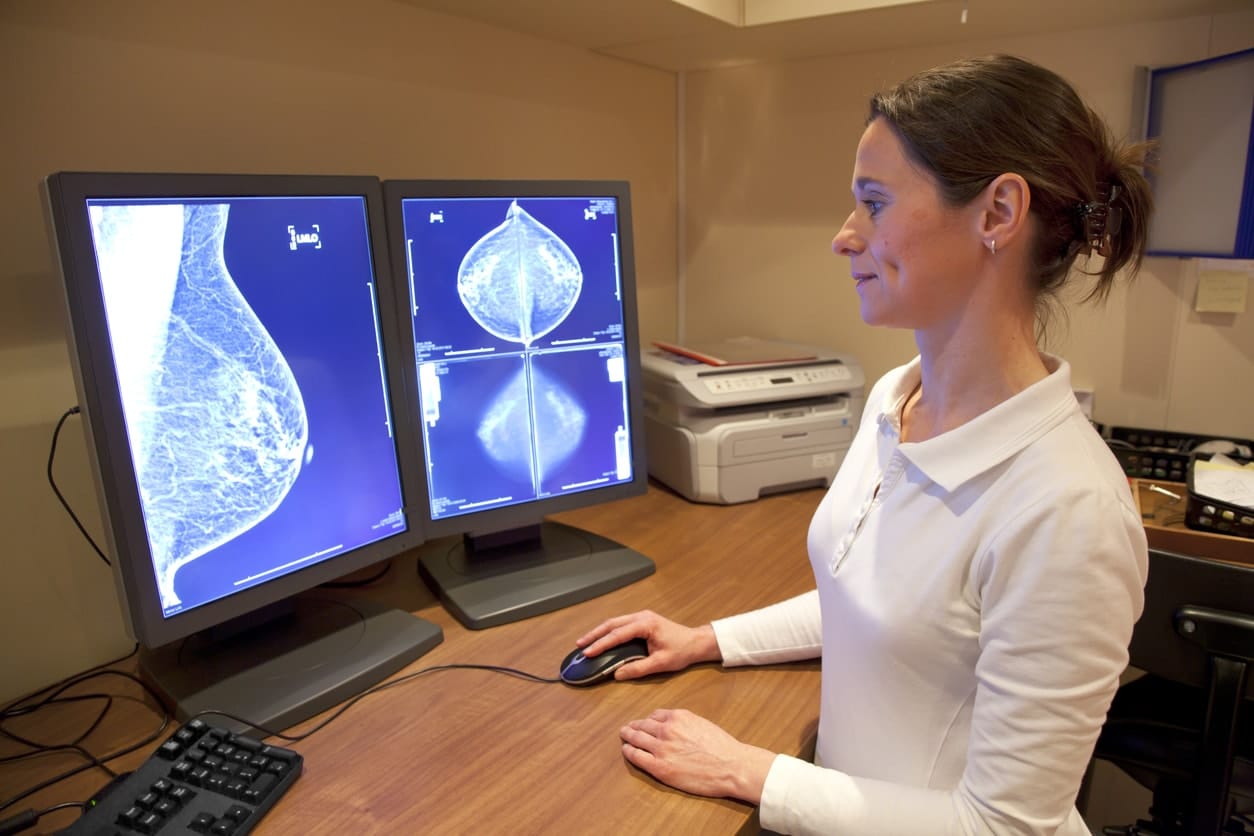Screening Vs. Diagnostic Mammogram

Why Mammograms are important
As a woman over 40, you know a yearly screening mammogram is an essential tool in the early detection of breast cancer. Since 1990, mammograms have helped reduce the mortality rate from breast cancer by nearly 40 percent. Although you’re probably familiar with the routine involved with a screening, you may not know the differences between screening and diagnostic mammograms.
What are the Differences between a Screening and a Diagnostic Mammogram?
Although a screening mammogram and diagnostic mammogram can be similar in how they’re performed, the main difference between the two tests lies in the reason the physician orders the tests.
Screening Mammogram
A screening mammogram is performed solely to detect signs of breast cancer. This test consists of x-rays or 3D imaging that capture pictures of the breast from several different angles to complete a comprehensive view of the entire breast. After the test, a radiologist will interpret the images and inform the patient within 30 days or less of the results. Most of the time, the results are normal and the patient can wait another year before getting her next test. By adhering to your yearly schedule and using the same mammography facility, radiologists have the added benefit of comparing your current test to previous ones, helping them more easily pinpoint tiny abnormalities from year to year.
Diagnostic Mammogram
If your radiologist detects abnormalities in your screening mammogram, a diagnostic mammogram will be ordered to assist in the diagnostic process. If you are experiencing nipple pain, discharge, or feel a lump, your doctor will order a diagnostic mammogram. Unlike with screening mammograms, a radiologist will be on hand to immediately interpret the mammogram results. The radiologist may order additional magnified imaging to get a better look at the abnormal area or may order an ultrasound or biopsy. Diagnostic mammograms are also used for women who’ve been treated for breast cancer in the past or are undergoing follow-up care.
A diagnostic mammogram usually results in the following findings:
- An abnormal trait from the screening mammogram turns out to be normal. The patient can resume her yearly mammogram screenings.
- The abnormal area is not cancerous but should be monitored. The patient will usually return in four to six months for additional testing.
- The abnormal area is suspect and a biopsy is required. Undergoing a biopsy does not automatically mean the abnormality is cancerous.
Why Is Breast Cancer Screening Important?
Screening mammograms are important yearly tests because they detect breast cancer in its earliest and most treatable stages. A screening mammogram can find breast abnormalities two years before you or your doctor can manually feel any changes in your breast tissue. If you’re diagnosed with breast cancer, positive outcomes are increased since you’re less likely to require the most extensive therapies, and doctors will likely be able to save more breast tissue. With early breast cancer detection and positive treatment outcomes, the American College of Radiology suggests that women begin receiving screening mammograms at age 40 regardless of their symptoms or family history.
Choose PURE Mammography for Your Diagnostic or Screening Mammogram
When it’s time for your yearly screening mammogram, PURE Mammography is the top choice for Long Island women. Conveniently located inside Smith Haven Mall in Lake Grove, you can stop by PURE for your mammogram without an appointment. We have extended business hours so that you can fit a mammogram into your busy schedule. With a highly attentive staff and spa-like exam rooms, you’ll feel relaxed and comfortable during your mammogram.
If you’d prefer to make an appointment, call PURE Mammography today at 631-652-3424 or fill out the form on our website today.